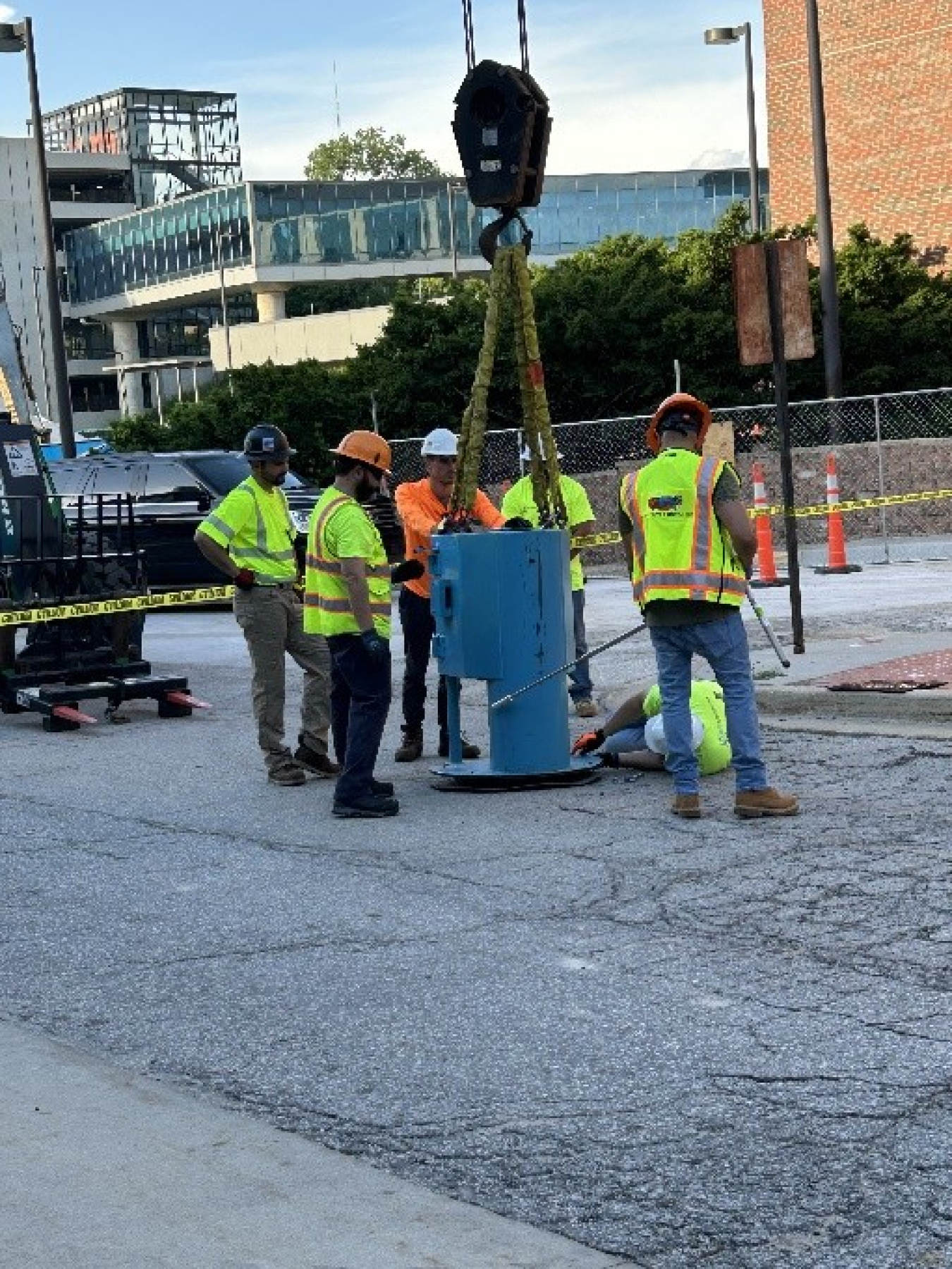NNSA just removed the last cesium irradiators from Kansas, a major advancement in eliminating radiological risk across the nation. To enhance national security, we helped them replace these devices with more secure technology.
National Nuclear Security Administration
September 10, 2025This milestone reduces risk and reflects the agency's commitment to protecting America from radiological terrorism

WASHINGTON – The U.S. Department of Energy’s National Nuclear Security Administration (NNSA) has completed removal of all cesium-137 irradiators from Kansas. This accomplishment marks an important step in eliminating risk across the United States and contributes to NNSA's ongoing effort to protect American communities from radiological threats.
Irradiators containing cesium-137 are used for medical applications such as blood treatment and cancer research. However, the radioactive material in these devices pose a serious risk if stolen and could be used to create a “dirty bomb.”
“By clearing out these irradiators across the nation, NNSA is making significant progress toward eliminating radiological risk and securing communities across the United States,” said Teresa Robbins, NNSA’s Acting Administrator and DOE’s Acting Under Secretary for Nuclear Security. “We are proud to add Kansas to the growing list of states that have eliminated cesium irradiators.”
Kansas is now one of 11 states and territories that are free of cesium irradiators, including Alaska, Arizona, Delaware, Idaho, Iowa, Nevada, New Mexico, Puerto Rico, South Dakota, and Wyoming.
This summer, an NNSA team removed the last cesium irradiator from the University of Kansas Medical Center. It was part of the Cesium Irradiator Replacement Project, a voluntary program that incentivizes users of cesium irradiators to switch to safer alternatives.
“By clearing out these irradiators across the nation, NNSA is making significant progress toward eliminating radiological risk and securing communities across the United States. We are proud to add Kansas to the growing list of states that have eliminated cesium irradiators.”
-- Teresa Robbins, NNSA’s Acting Administrator and DOE’s Acting Under Secretary for Nuclear Security.

“Thanks to our partnership with NNSA and the resources, support, and expertise they provided, we were able to eliminate the last Cs-137 from the state of Kansas,” said Paul Toler, Senior Associate Vice Chancellor for Research Administration at the University of Kansas Medical Center. “This makes our community safer, while simultaneously advancing the university’s research mission for the benefit of the citizens of the state of Kansas.”
“The removal of the last two cesium irradiators in Kansas plays an instrumental role in reducing radiological threats and enhancing public safety in our state, while also allowing for lower operational costs for our licensees,” said Tessa Reaves, Kansas Department of Health. “The removal and replacement of the devices with safer alternatives was made possible by collaboration with the Cesium Irradiator Replacement Project and funding from NNSA’s Office of Radiological Security.”
Eliminating cesium irradiators allows doctors, researchers, and essential medical workers to operate in Kansas with significantly less radiological risk, strengthening public safety and protecting the nation’s vital medical system.
NNSA’s Office of Radiological Security enhances U.S. and global security through a two-pronged approach, eliminating risk by removing high-activity radioactive material and preventing adversaries from acquiring such radioactive material by strengthening industry, law enforcement, and government partnerships. These efforts safeguard American interests and promote a safer, more secure, and more prosperous America.
To learn more about ORS and how you can keep your community and country safe, please contact: ORSinfo@nnsa.doe.gov.

